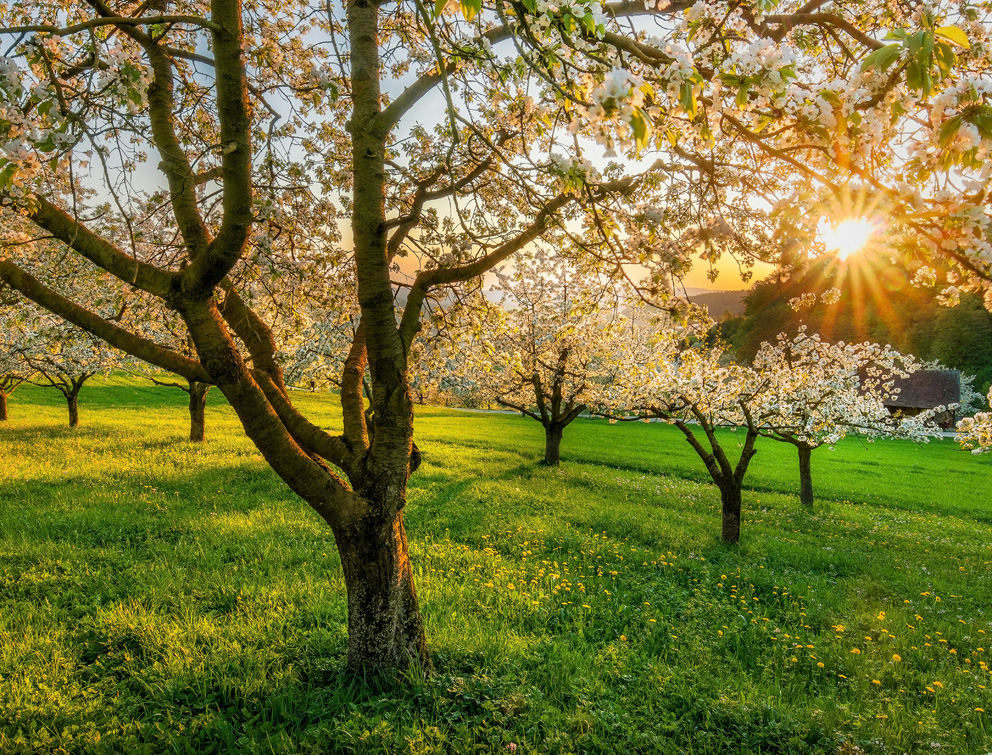Goodbye winter. Hello spring!
Gardening Guide for March
March is the month of blossom, bulbs, buds, and new beginnings – a glorious time of year for gardeners. There’s a lot of sowing and growing to be done and a lot to look forward to. So put a spring in your step and get gardening with Artscape’s checklist for early spring.
Planting
March is still a good time for planting, as plants can get established before the soil dries in summer.
- Bare-rooted trees or shrubs should be planted by the end of the month. Container grown plants can be planted throughout the spring.
- Fill in any gaps with some spring flowering potted bulbs. They’ll provide an instant display of colour and will come back year after year. You can also keep planting summer flowering bulbs such as gladioli, freesias, and lilies into April.
- Start sowing seeds for summer annuals, vegetables, or perennials. Some can be sown direct outdoors and others sown indoors to plant out after the risk of frost has passed. Be guided by instructions on the seed packet.
- Native wildflowers can be sown outside in March. These should germinate in a damp spring and be able to support themselves in summer once they have established. Remove weeds before sowing and rake the soil to a fine tilth, and don’t enrich it with fertiliser.
- Lift and divide established perennial plants and replant to improve their vigour and create new plants for your garden.
Pruning
Spring pruning makes way for more vigorous growth, encourages more flowers and foliage, and ensure plants have a nice shape. Pruning also gives you the chance to cut out dead or diseased stems. After pruning, mulch plants with garden compost or well-rotted manure, to give them a boost.
- Cut back ornamental grasses and perennials, and late-summer flowering deciduous shrubs such as Hydrangeas and Buddleia. Be careful not to damage or remove healthy new shoots. This will allow new growth to come through. Ideally wait until daytime temperatures are consistently over 10 degrees to give overwintering insects sheltering in seedheads and foliage a chance to move on. If not, leave the cuttings in a pile somewhere for the same reason.
- Start hoeing to control annual weeds as temperatures begin to rise, then mulch to suppress weeds and give your beds and borders a final tidy before the growing season begins.
- Start planning the seeds to sow for summer flowers and crops.
Be Water Wise
Summer droughts are becoming more common, so it’s worth planning for them now.
- Collect and store rainwater to keep your garden healthy and sustainable during dry spells. Rainwater is good for plants as it’s naturally soft and free from chemicals. Consider installing water butts, harvesting tanks, troughs or even a pond. A rainwater collection system could be integrated into other garden structures too, such as a pergola adapted to direct rainwater for storage.
- Channel rainwater runoff to water plants. Known as a ‘rain garden’, this is a shallow depression which soaks in rainwater runoff and is planted with native shrubs and flowers that thrive in wet conditions such as Iris Sibirica and Persicaria.
- Mulch surfaces with composted bark, gravel, or even a few plant cuttings. This helps to keep in moisture and inhibit weed growth. Avoid fresh woodchip or too many plant cuttings as these can contain toxins which inhibit growth of plants. Fresh woodchip should be aged in a pile for 4-6 months before it’s safe to use as a mulch.
- Plant drought tolerant plants to reduce the need for watering in dry spells. These are useful in sunny spots or areas shaded from rain such as beneath trees.
Creating beautiful spring gardens with Artscape
If you’d love your garden to look beautiful in spring, and every season, contact us now to discuss your ideas. Artscape’s horticulturalists, landscapers and garden designers create planting schemes and landscape improvements, that look stunning all year round in Buckinghamshire and Berkshire. From planting new trees to laying a new lawn, we’re here to help transform your outdoors spaces in Buckinghamshire or Berkshire and surrounding counties, so do please get in touch with us today.





